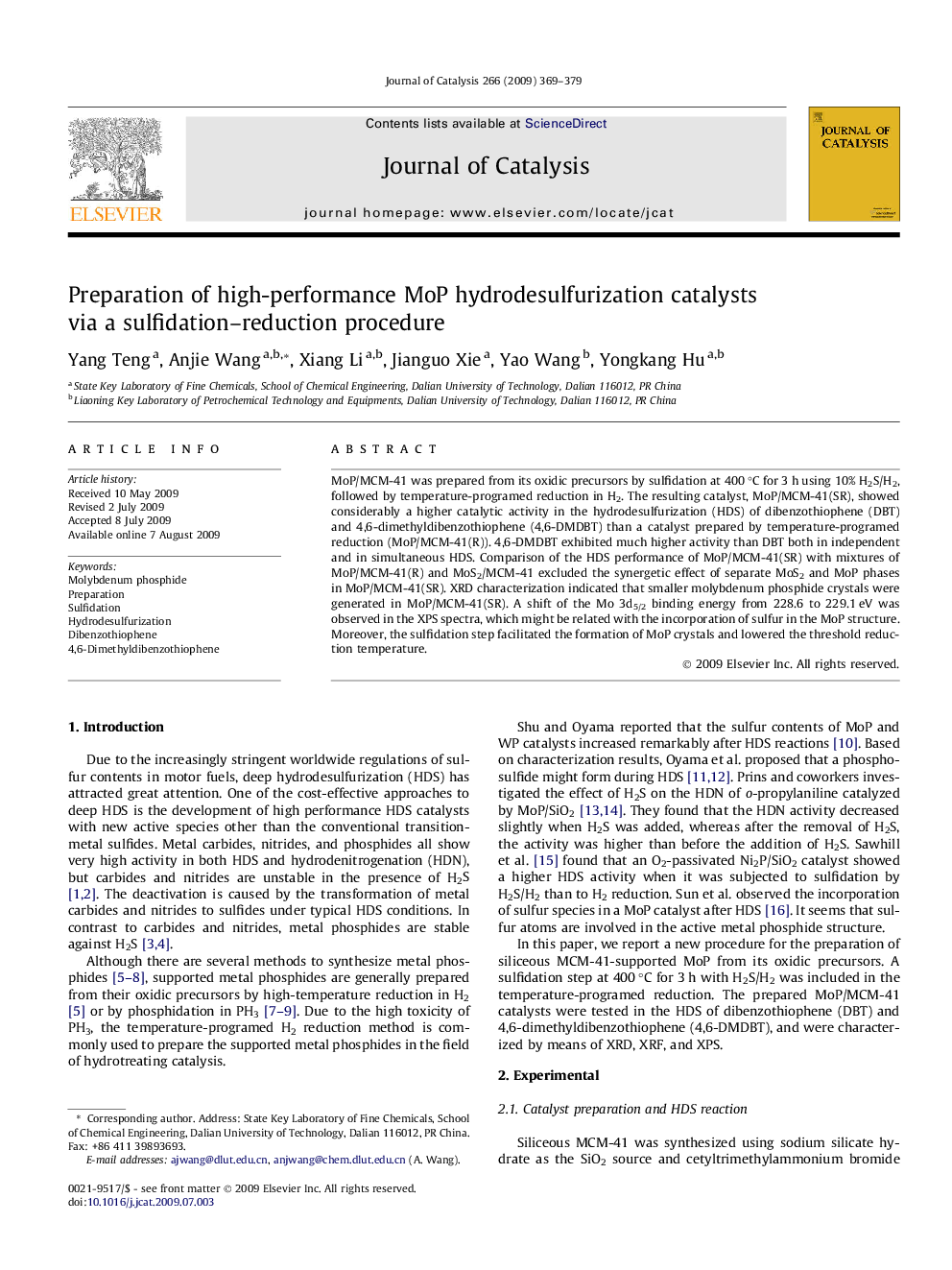| Article ID | Journal | Published Year | Pages | File Type |
|---|---|---|---|---|
| 62602 | Journal of Catalysis | 2009 | 11 Pages |
MoP/MCM-41 was prepared from its oxidic precursors by sulfidation at 400 °C for 3 h using 10% H2S/H2, followed by temperature-programed reduction in H2. The resulting catalyst, MoP/MCM-41(SR), showed considerably a higher catalytic activity in the hydrodesulfurization (HDS) of dibenzothiophene (DBT) and 4,6-dimethyldibenzothiophene (4,6-DMDBT) than a catalyst prepared by temperature-programed reduction (MoP/MCM-41(R)). 4,6-DMDBT exhibited much higher activity than DBT both in independent and in simultaneous HDS. Comparison of the HDS performance of MoP/MCM-41(SR) with mixtures of MoP/MCM-41(R) and MoS2/MCM-41 excluded the synergetic effect of separate MoS2 and MoP phases in MoP/MCM-41(SR). XRD characterization indicated that smaller molybdenum phosphide crystals were generated in MoP/MCM-41(SR). A shift of the Mo 3d5/2 binding energy from 228.6 to 229.1 eV was observed in the XPS spectra, which might be related with the incorporation of sulfur in the MoP structure. Moreover, the sulfidation step facilitated the formation of MoP crystals and lowered the threshold reduction temperature.
Graphical abstractA sulfidation–reduction procedure was used to prepare a MoP/MCM-41 catalyst, which showed considerably a higher hydrodesulfurization (HDS) activity, especially for 4,6-dimethyldibenzothiophene, than the counterpart prepared by conventional method.Figure optionsDownload full-size imageDownload high-quality image (54 K)Download as PowerPoint slide
